Why is it always Japan vs Switzerland when it could be Japan × Switzerland?
Help bring peace to the warring watch factions
The Precursor
Today’s newsletter is long, so I apologise. I really enjoyed exploring the four watches on offer so hopefully you’ll forgive me. Substack has a text-to-voice reader, which is perfect if you’re nursing a hangover from an overindulgent Saturday night.
Grand Seiko “Tapestry Dial” SBGA347
A Grand Seiko with two unexpected quirks. Much to the disappointment of some collectors, Grand Seiko typically avoids luminous hands and markers. Personally, I’m not bothered by my watch’s inability to tell the time at night, especially when the lumeless Grand Seikos in question are often very dressy. Released in 2017, the titanium SBGA347 breaks the mould by blending a dressy style with a sporty aesthetic, and I think it pulls it off.
Is the lume going to impress diehard glow-in-the-dark enthusiasts? Absolutely not. The lume is minimal but deliberate. For me, it’s part of the balance - if any of the other indices were lumed, we’d be boldly stepping into tool or sports watch territory. But there’s something undeniably satisfying about seeing stereotypical Grand Seiko indices radiating light onto the dial.
The dial is the second quirk of this watch. By now, Grand Seiko has presumably shown you nearly every pattern imaginable, along with several you couldn’t have previously imagined - but have you seen a GS pinstriped dial? Rolex calls it a Tapestry dial, while Omega’s vertically striped Aqua Terra dials are called Teak dials. And Grand Seiko? They simply refer to it “vertical stripes”. Looks like the floor is ours - any suggestions?
The unusual dial pattern is the counterbalance in an intricate design act. If we see the lume as nudging the watch towards sporty, then the eye-catching decorative nature of the striped dial pulls it back the other way.
[As an aside, Omega’s Teak dial was designed and named after the narrow teak boards that form the decking on luxury yachts. Omega is about as unsubtle with its designs and naming conventions as it gets, but that feels on the nose even for them.]
Are you willing to join me in accepting that dauphine hands are merely an opportunity for Grand Seiko to show off? Take a moment to admire not only how perfectly mirrored the top of the minute hand is, but also how impossibly crisp the angles are - made even more special when you know it’s all achieved through hand-lathing and hand-polishing.
Discontinued a few years ago and only released in Japan, the SBGA347 was one of Grand Seiko’s first independent releases. Prior to 2017, Grand Seikos were typically double-branded, with Seiko sitting at the top of the dial and Grand Seiko at the bottom. Since being pushed out of the nest, Grand Seiko hasn’t looked back, but it’s nice that we can look back and appreciate the models that started it all.
The 9R65 Automatic Spring Drive movement that powers this watch has a 72-hour power reserve and is accurate to 15 seconds per month.
The Grand Seiko SBGA347 is available to buy on our website.
In great condition overall. No marks of any noticeably significance. Box and papers, and I’ve added a GS9 Club cleaning cloth and brush!
Campanola “Beniake” NZ0000-07W
A very literal mix of Swiss and Japanese watchmaking. In 2012, Citizen acquired Swiss movement manufacturer La Joux-Perret, and in 2015, the results of that acquisition became public - the first automatic Campanola.
Powered by the Swiss-designed and Swiss-made Y513 calibre, the Campanola NZ0000 series was introduced exclusively to the Japanese market. While La Joux-Perret designed and manufactured the components, the movement itself is hand-assembled by Campanola’s specialist technicians in Japan. Much like Grand Seiko, Campanola prides itself on the fact that every element - painting, polishing, assembly, and finishing - is done by hand in their Japanese studio.
The dial is a striking colour. Aptly named Beniake (紅明け / Crimson Dawn), the burnt orange hue is achieved by mixing iridescent red lacquer with powdered silver. Much like Seiko’s Masterpiece Collection, Citizen entrusted the creation of these dials to a single craftsman - Tetsuo Gido, a renowned master of the 400-year-old Aizu lacquerware technique.
Tasked with hand-lacquering every dial, his flawless execution is immediately apparent to anyone who has handled one of these in person. And they aren’t just lacquered once. In order to create the colour gradient, the lacquering process is completed five times for each dial, which ensures the powered silver can sit at different depths in the lacquer.
Absolutely no corners have been cut - as you can see from the reflection of the second hand in the bottom-right photo above, the lacquer has been polished to a mirror finish.
Much like the cosmic-inspired quartz Campanolas that have featured heavily in my newsletters, the NZ0000 Beniake takes a similarly layered approach, though its layout is more traditional and restrained. As much as your eyes are drawn to the vibrancy of a Campanola dial, they linger on the vertical depth and unique shapes that form its various complications.
As regular readers already know, I love Big Dates and I cannot lie - and this watch is no exception. Its staggered paddle boards actually flip over one another, making it feel even more like an old-school train departure board. Delightful.
Originally retailing for just under ¥1,000,000 (~$6600), the chance to own what is surely one of the only Japan-Switzerland automatic movement collaborations, at a fraction of its original price, shouldn’t be overlooked.
The Campanola “Beniake” NZ0000-07W is available to buy on our website.
In great condition overall. Just serviced by Campanola in Japan. No marks of any noticeable significance, other than a few minor scratches on the caseback. Box and instructions.
Seiko “Expo” 6119-8090
Don’t you just love it when a character in a movie says the title of the movie? Provenance. Not the typical watch you’ll find in my newsletter, but this 6119 has such a neat backstory that I had to include it.
The 1970 World’s Fair, or Expo ‘70, took place in Osaka, Japan. Much like the 1964 Olympics, which Japan also hosted, Seiko saw it as an opportunity to showcase its timekeeping prowess to the world.
And while Japan was trying to unite the world’s warring nations under the Fair’s theme - Progress and Harmony for Mankind - Seiko was busy building the aggressively 1970s-looking Atomic Clock you see in the picture above. Accurate to +1 second every 1,000 years, it was designed to make people take Japanese watchmaking seriously.
With 64,000,000 attendees - a record that stood until the 2010 Shanghai World’s Fair - we can be confident that lots of people at least saw Seiko’s horological monstrosity. Whether it changed perceptions of Japanese watchmaking is hard to quantify, but Seiko was clearly pleased with the event’s success. To commemorate the event, they gifted Expo ‘70 branded 6119-8090 watches to workers at the Fair!
The cherry blossom design, with its five red petals, is meant to represent the five continents coming together for Progress and Harmony for Mankind.
Because the 6119-8090 was never sold by Seiko, it’s not only a great piece of both Seiko’s and Japan’s history, but also a striking watch even by today’s standards. The dial features a beautifully brushed metallic sunburst effect, with 12 polished and applied indices. The sharply cut case flirts with Seiko’s Grammar of Design principles.
The Seiko “Expo” 6119-8090 is available to buy on our website.
In great condition overall. The movement was just serviced. The dial has some stains around its edge, but is otherwise in great condition. The crystal is unmarked. The case looks sharp but shows age-appropriate signs of wear. On an aftermarket leather Seiko strap.
Credor “Big Date” GCLP993 Spring Drive
There are no Grand Seiko Big Dates. Whether we’re talking about mechanical movements or spring drives, the only high-end Seiko movement with a Big Date complication is the 7R87 Credor Spring Drive. And even more surprisingly, there are only a handful of models that even use that movement… and they’re all discontinued.
If you missed my original write-up about the Big Date Credor collection, please click here to read it.
The GCLP993 resembles the smooth surface of a piano key. Adorned with painted a logo, markers, and power reserve indicator, it radiates pure elegance. Paired with one of Credor’s supple leather straps, it’s a refined choice - equally at home in the office or at a black-tie event.
As expected from a Credor at this price point, every detail is meticulously hand-finished, from the hands to the case and indices. A notable design choice is the fully polished case, which features no brushing whatsoever - a deliberate nod to vintage dress watches.
The Credor “Big Date” GCLP993 is available to buy on our website.
In great condition. No noticeable marks of any significance on the watch, apart from the caseback which has a few hairlines. On the original leather strap, and comes with full box and papers.
Don’t forget to follow my Instagram to see all of the watches above in full cinematic glory next week.





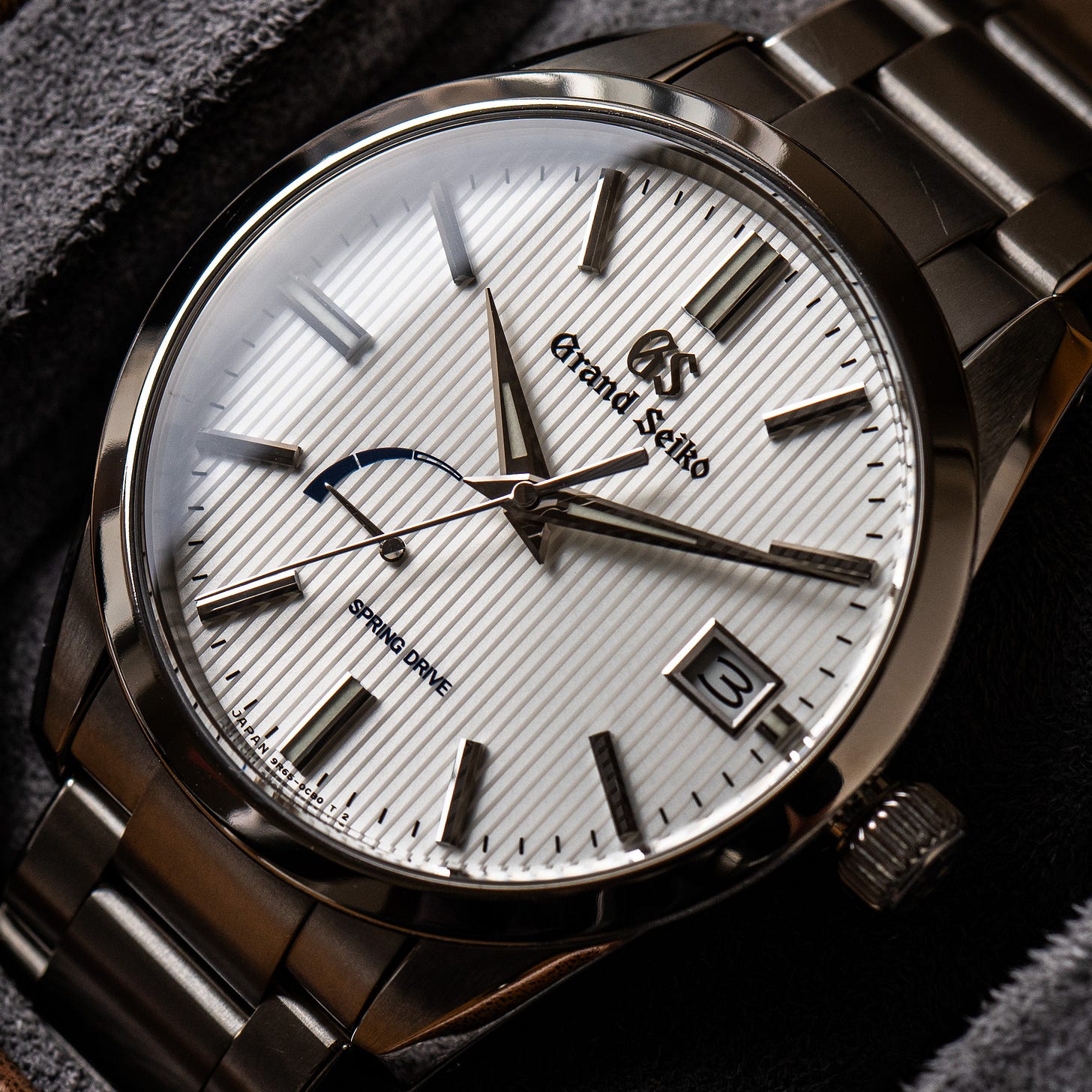


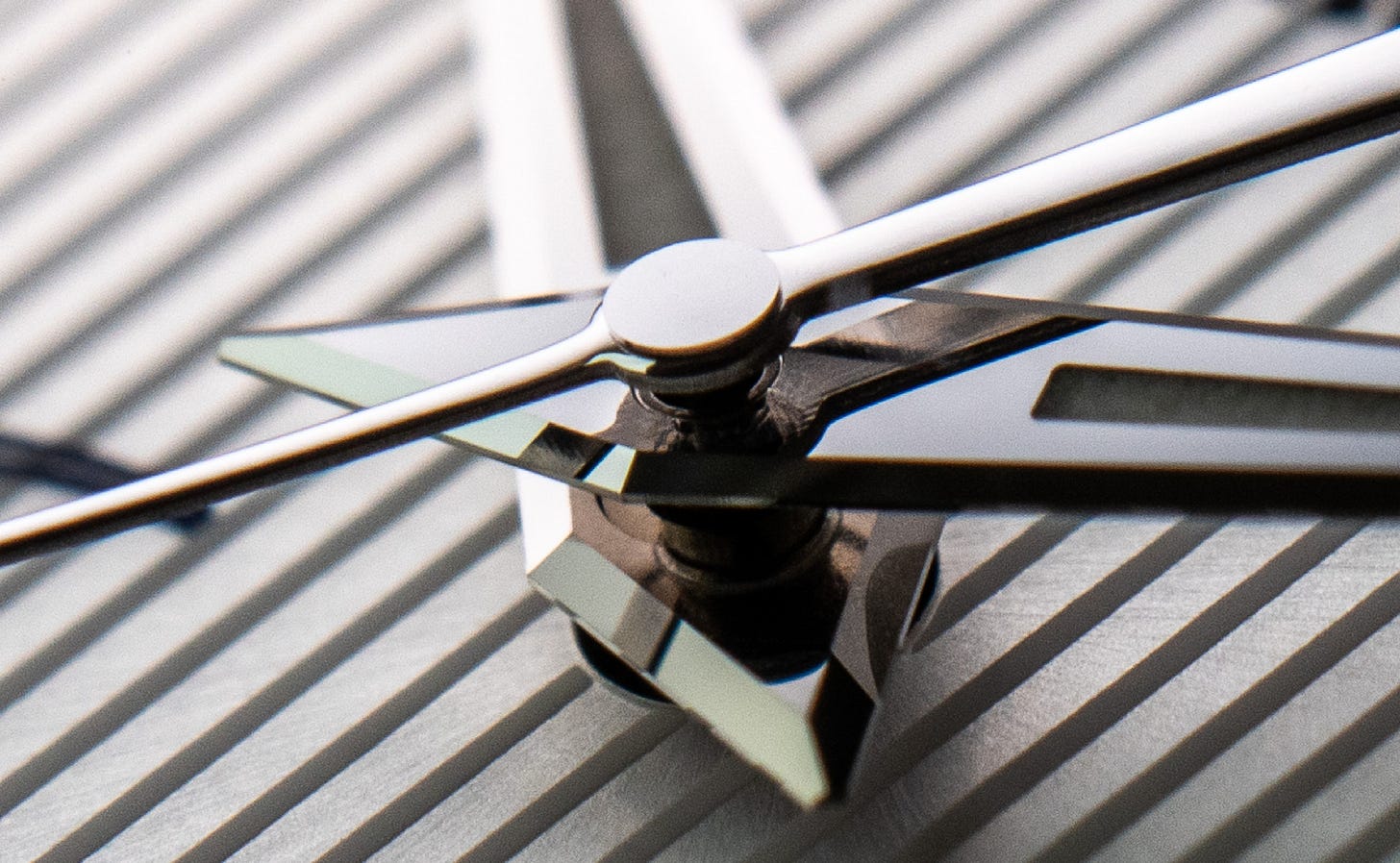
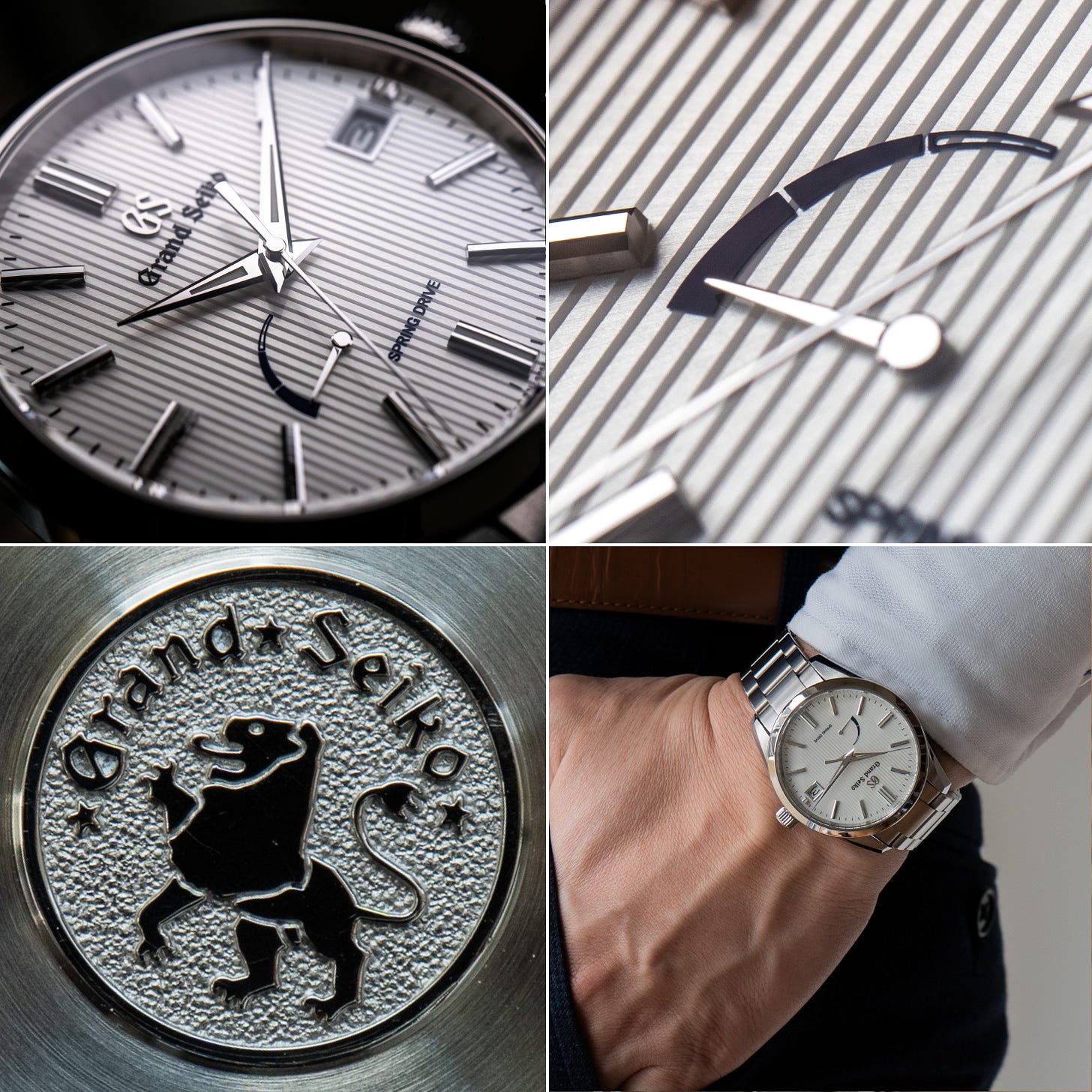
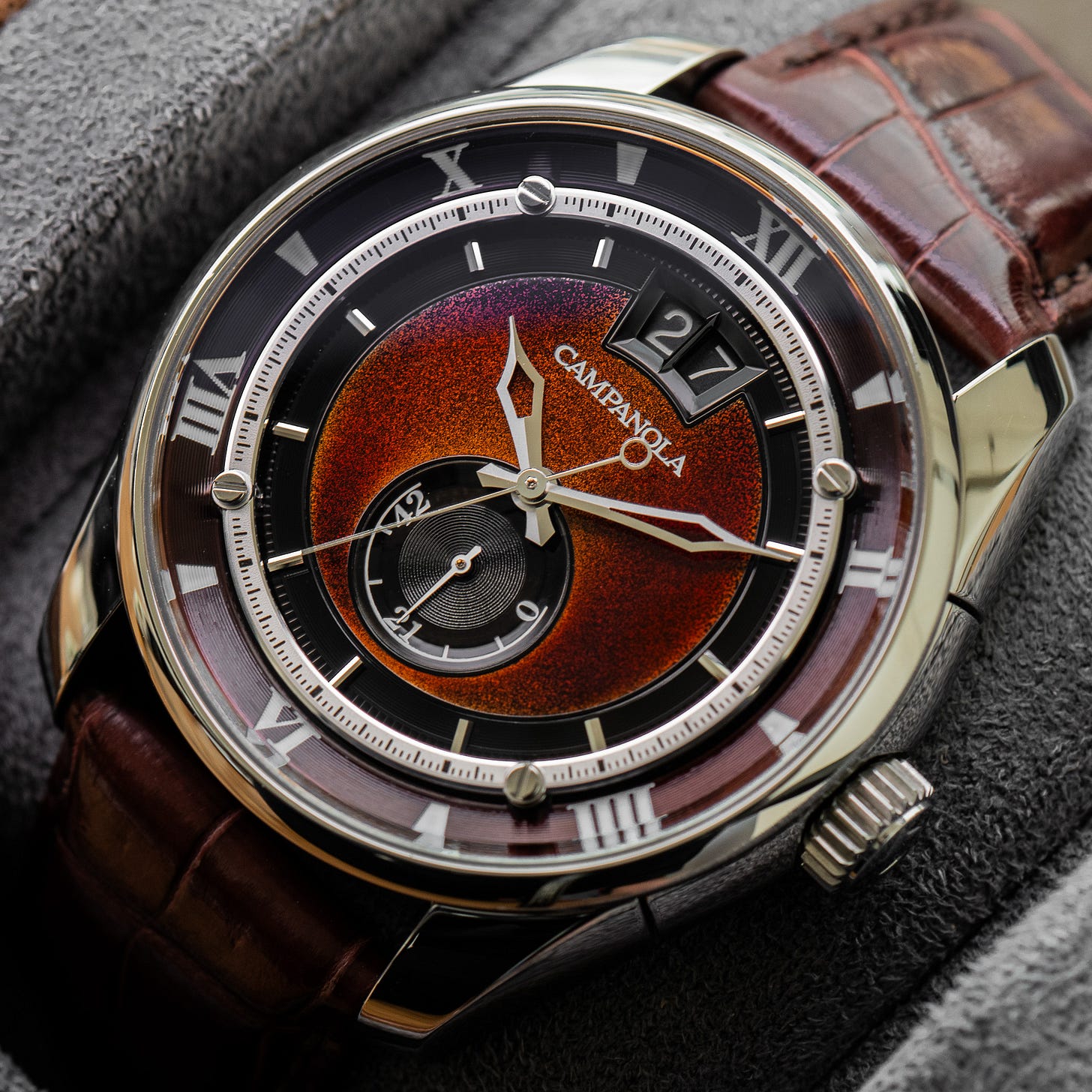





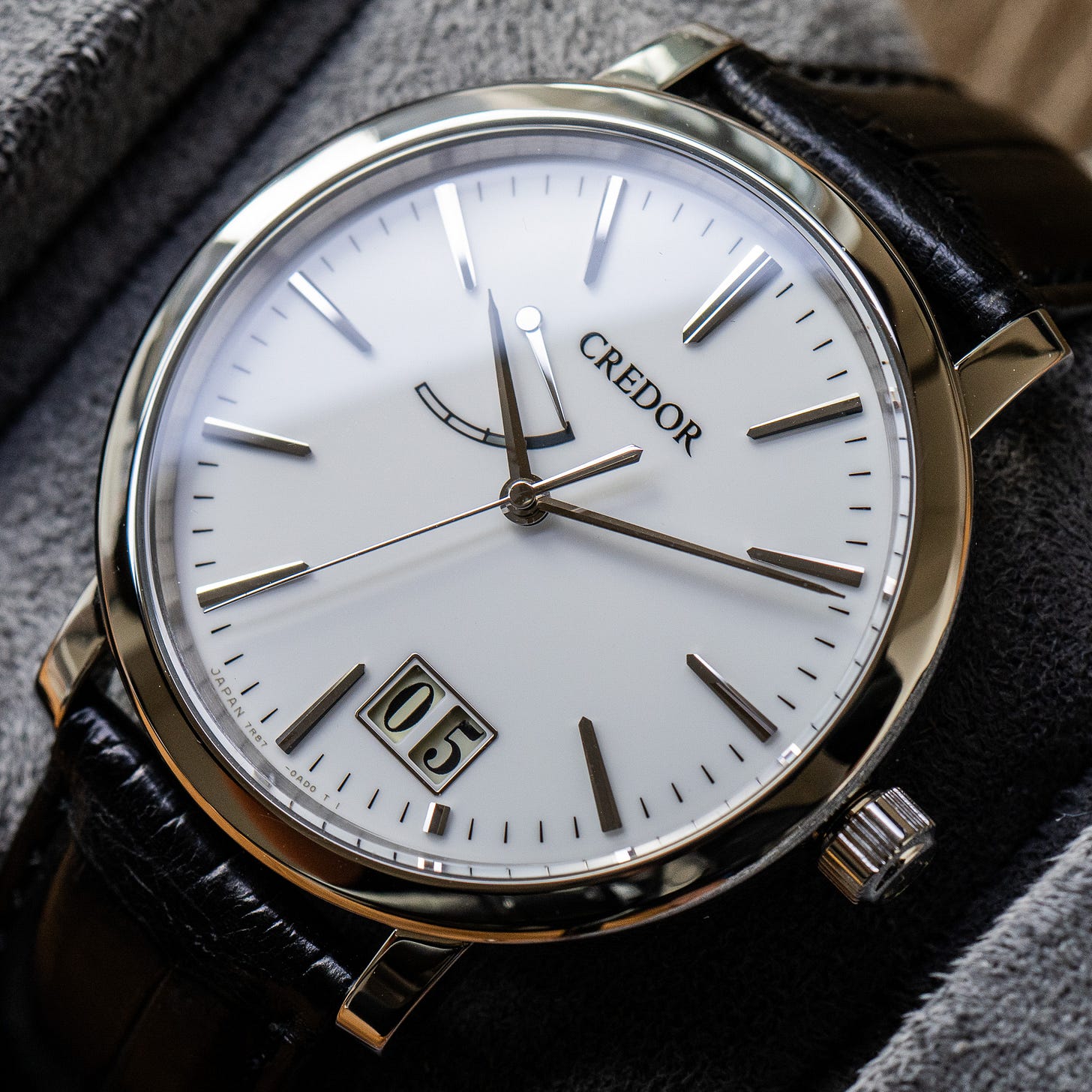

You know, I think I prefer no lume on the hands. It gives GS the ability to show off their finishing of those hands- not many brands can say the same!
I also found that with my SGBY013, the faintest glimmer of light in the dark was enough for me to tell the time, as it just reflected amazingly off the hands!
Really very interesting to find out how and why these beautiful watches were created. I'll choose the right one in the end! But by the time I do, thanks to you, I will have learnt a lot...
Michael